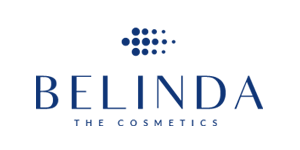CE Certification and CE Marking: Navigating the Lifts Directive 2014/33/EU Technical Documentation
In today's competitive global market, compliance with safety and regulatory standards is non-negotiable for businesses, especially in the manufacturing and engineering sectors. The Lifts Directive 2014/33/EU Technical Documentation plays a pivotal role in ensuring lifts and safety components meet stringent European standards. This comprehensive guide will help businesses understand the importance of CE Certification, the role of technical documentation, and how to achieve compliance efficiently.
What is CE Certification and CE Marking?
CE Certification is a mandatory conformity mark for products sold within the European Economic Area (EEA). It ensures that a product complies with EU health, safety, and environmental protection standards. CE Marking signifies that a product meets these requirements and can be legally marketed within the EU.
For industries dealing with lifts and safety components, compliance with the Lifts Directive 2014/33/EU is crucial. This directive establishes essential health and safety requirements (EHSRs) and mandates detailed technical documentation for every lift and related safety component placed on the market.
Why is the Lifts Directive 2014/33/EU Technical Documentation Essential?
The Lifts Directive 2014/33/EU Technical Documentation is a critical component of the certification process. It provides:
Evidence that the product complies with EHSRs.
Details on the product’s design, manufacturing, and operational processes.
A framework for authorities to verify compliance during audits.
Failure to provide comprehensive technical documentation can result in non-compliance, product recalls, or legal penalties.
Key Components of the Technical Documentation
The technical documentation under the Lifts Directive 2014/33/EU must include the following elements:
General Description: An overview of the lift or safety component, including intended use and functionality.
Design and Manufacturing Details: Technical drawings, schematics, and specifications.
Risk Assessment: Identification and mitigation of potential hazards.
Test Results: Reports from safety and performance tests.
User Instructions: Operating manuals, maintenance guides, and installation procedures.
Declarations: The EU Declaration of Conformity (DoC) confirming compliance.
By maintaining meticulous documentation, businesses can streamline the auditing process and demonstrate adherence to regulatory standards.
The CE Certification Process for Lifts and Safety Components
Achieving CE Certification under the Lifts Directive requires a structured approach. Here is a step-by-step guide:
Step 1: Understand the Directive
Familiarize yourself with the requirements of the Lifts Directive 2014/33/EU, including specific obligations for manufacturers, importers, and distributors.
Step 2: Conduct a Risk Assessment
Identify potential hazards associated with your product and implement measures to mitigate these risks. This assessment should be documented thoroughly.
Step 3: Compile Technical Documentation
Prepare comprehensive technical documentation as outlined above. Ensure all details are accurate and up-to-date.
Step 4: Testing and Verification
Partner with a notified body to conduct safety and performance tests. This step is essential for high-risk products.
Step 5: Draft the EU Declaration of Conformity (DoC)
This declaration confirms that your product meets all applicable EHSRs. Include it in your technical documentation.
Step 6: Affix the CE Marking
Once compliance is confirmed, affix the CE Marking to your product. Ensure the marking is visible, legible, and permanent.
Step 7: Ongoing Compliance
Maintain records, update documentation as necessary, and monitor product performance to ensure continued compliance.
Industries Benefiting from the Lifts Directive Compliance
Several industries rely on CE Certification and the Lifts Directive 2014/33/EU Technical Documentation to access the European market, including:
Elevator Manufacturers: Ensuring lifts meet safety and operational standards.
Construction Companies: Installing compliant lift systems in buildings.
Component Suppliers: Providing certified safety components for lifts.
Property Management Firms: Maintaining lift systems in compliance with EU regulations.
Benefits of CE Certification for Businesses
Investing in CE Certification provides numerous advantages:
Market Access: Legally sell products in the EU and EEA.
Enhanced Credibility: Demonstrate commitment to safety and quality.
Risk Mitigation: Avoid penalties, recalls, and reputational damage.
Competitive Edge: Stand out in the global market with certified products.
Common Challenges and Solutions
Challenge 1: Complex Documentation Requirements
Solution: Partner with certification experts who understand the intricacies of the Lifts Directive 2014/33/EU.
Challenge 2: Keeping Up with Regulatory Changes
Solution: Regularly review updates to the directive and adjust compliance strategies accordingly.
Challenge 3: Time-Consuming Certification Process
Solution: Plan ahead and work with experienced auditors to expedite the process.
Take the Next Step Towards CE Certification
Compliance with the Lifts Directive 2014/33/EU Technical Documentation is not just a legal requirement—it’s an investment in the safety, quality, and marketability of your products. Whether you’re a manufacturer, importer, or distributor, achieving CE Certification can unlock new opportunities and strengthen your brand’s reputation.
Ready to get started? Contact us today to learn how our certification experts can guide you through the process and ensure your products meet all regulatory standards.
- Get Your Legal Advice
- All Experts Lawyers
- All Experts Lawyers
- Great Discounted Rates
- Fighting for The Average Joe
- Get The Money You Deserve
- All Experts Lawyers
- Justice For All


Point of View
Our Vision
A lawyer or attorney is a person who practices law, as an advocate, attorney, attorney at law, barrister, barrister-at-law, bar-at-law, civil law notary, counsel, counselor, counselor, counselor at law, solicitor, chartered legal executive, or public servant preparing, interpreting and applying law, but not as a paralegal or charter executive secretary. Working as a lawyer involves the practical application of abstract legal theories and knowledge to solve specific individualized problems, or to advance the interests of those who hire lawyers to perform legal services.

